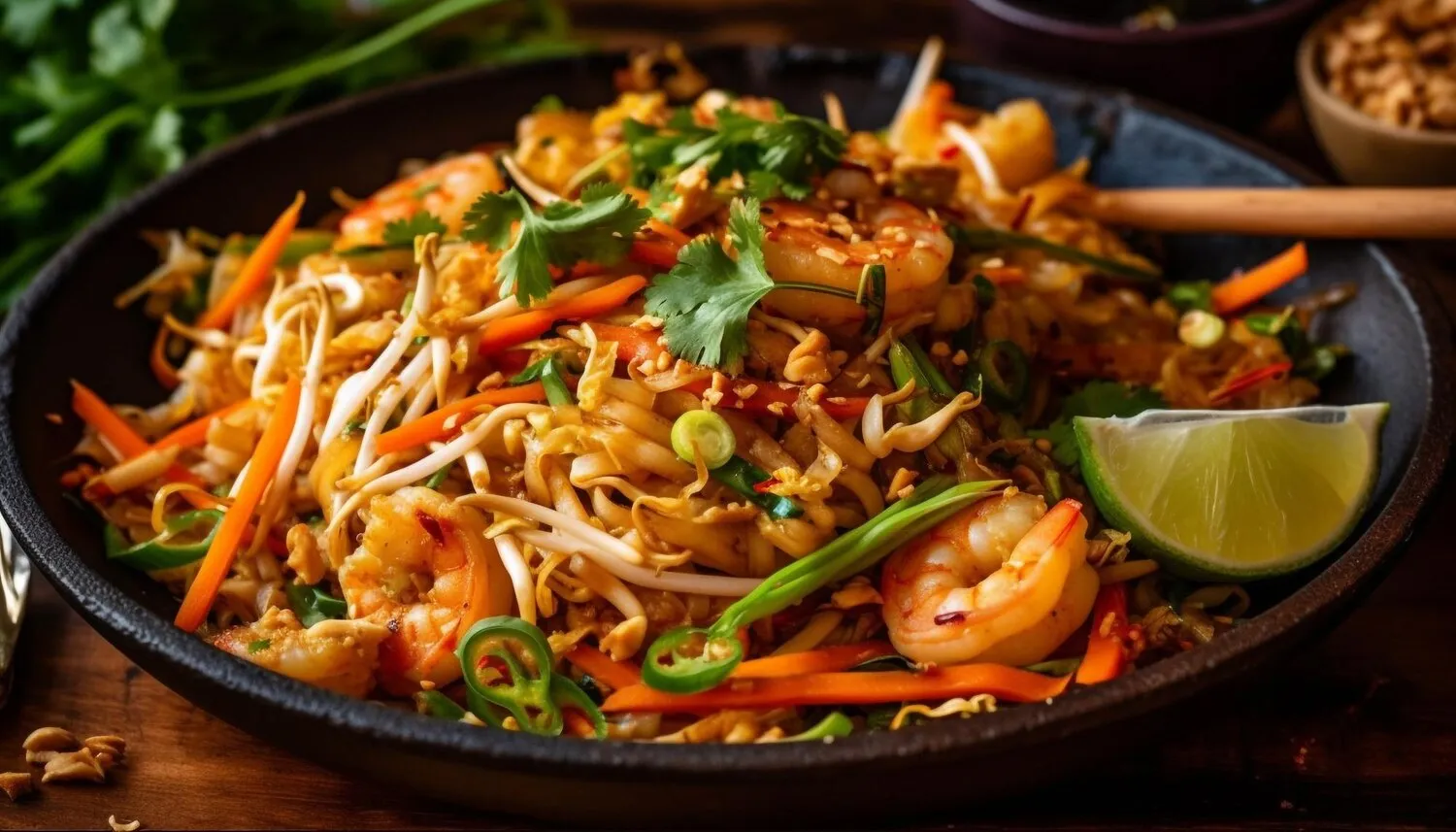
Udon
Similar to Ramen, Udon dishes are also reportedly available and well-received. Udon typically features thick wheat flour noodles in a broth or sauce, often accompanied by toppings.
Nutrition Facts
* The % Daily Value (DV) tells you how much a nutrient in a serving of food contributes to a daily diet. 2,000 calories a day is used for general nutrition advice.
Noodle Bar by Grissino
Udon's origins are somewhat debated, but it's generally believed that wheat noodles were introduced to Japan from China during the Nara period (710-794 AD). The noodles evolved over time, with the thicker, chewier variety we know today becoming popular during the Edo period (1603-1868).
Udon is a widely loved and accessible comfort food in Japan, enjoyed by people of all ages and backgrounds.
Regional Variations
Udon dishes vary greatly from region to region in Japan. For example, Sanuki udon from Kagawa Prefecture is known for its particularly firm and chewy texture, while Inaniwa udon from Akita Prefecture is much thinner and smoother.
Quick and Casual Dining
Udon is often eaten in casual settings, like stand-up noodle shops or quick-service restaurants, making it a popular and affordable meal.
Home Cooking
Udon is also frequently prepared at home, allowing for endless customization of broth and toppings according to personal preferences.
Udon's flavor profile is typically savory and umami-rich, derived from the broth or sauce and the toppings used.
The broth is often dashi-based, made from kombu (kelp) and katsuobushi (dried bonito flakes), providing a deep umami flavor. Soy sauce and mirin add saltiness and sweetness. The noodles themselves have a mild, slightly wheat-y flavor, acting as a blank canvas for the broth and toppings. Common toppings include tempura (especially shrimp and vegetable), aburaage (fried tofu pouches), kamaboko (fish cake), scallions, and various meats like beef or chicken. Curry udon features a rich, spiced curry sauce.
Noodle Texture
Freshly made or high-quality dried udon noodles are key to achieving the desired chewy and slightly springy texture. Avoid overcooking the noodles, as they can become mushy.
Broth Temperature
Serve hot udon dishes with a piping hot broth to fully appreciate the aroma and flavors. Keep the broth warm while eating to maintain the optimal experience.
Topping Balance
Consider the balance of flavors and textures when choosing toppings. A mix of savory, sweet, and crunchy elements will create a more satisfying dish. Don't overcrowd the bowl with too many toppings, as this can overwhelm the noodles and broth.
Explore additional Noodles dishes and restaurants
Explore NoodlesDiscover top dining spots and culinary experiences in Bolzano.
Explore BolzanoLearn more about the food culture, restaurant scene, and culinary heritage of Italy.
Explore Italy